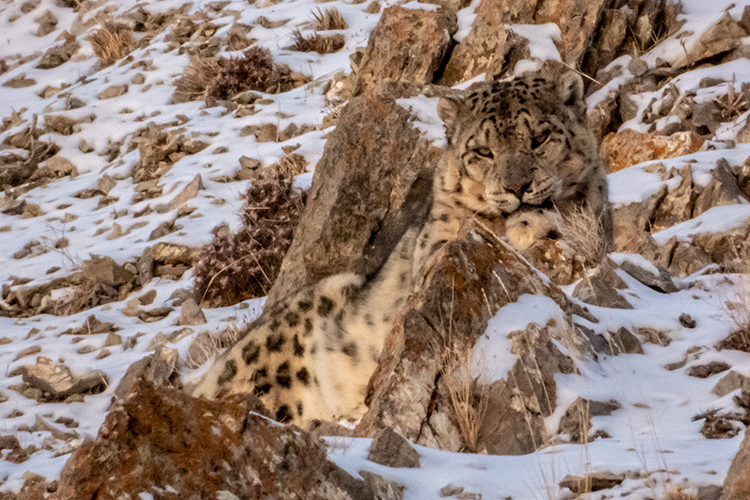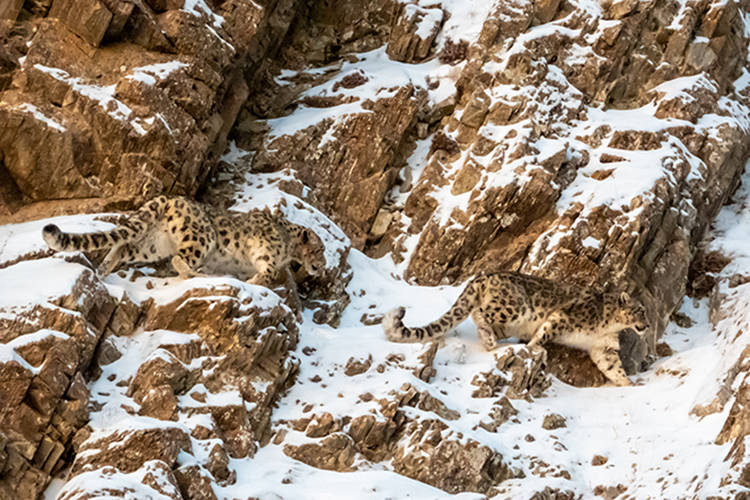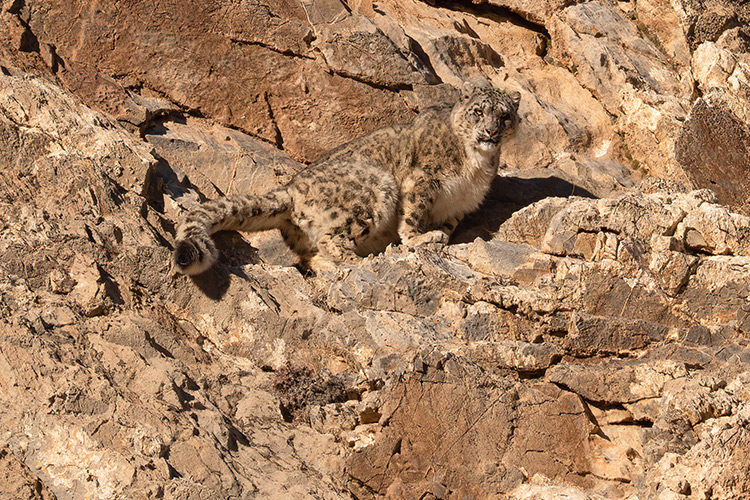Apex Supports the Snow Leopard Trust
Posted by Gerald Broddelez
in Asia & Pacific and Conservation
The big cats of Asia’s high mountains
The Snow Leopard is a solitary animal found in the high mountains of South and Central Asia—Afghanistan, Bhutan, China, India, Kazakhstan, Kyrgyzstan, Mongolia, Nepal, Pakistan, Russia, Tajikistan, and Uzbekistan. They prefer to inhabit steep, rugged terrain with cliffs, ridges, gullies, and slopes interspersed with rocky outcrops. They can be found at elevations ranging from 10,000 to over 17,000 feet (3,000 to 5,000 meters) in the Himalayas. In Mongolia, however, they can be found as low as 2,000 feet (600 meters) and often inhabit flat or rolling terrain if sufficient cover is present.
The silent and shy Snow Leopard
Snow Leopards have thick grey and yellow-tinged fur with solid spots on their head, neck and lower limbs, and rosettes over the rest of the body. Rosettes are large rings enclosing smaller spots. This unique coloring helps the cat blend into its stony, mountain habitat. (Scientists also rely on these spot patterns to identify individual Snow Leopards when conducting research.)
Snow Leopards have large furry paws that act as both snow shoes and padding. Long, thick tails help for balancing on rocks, leaping, maneuvering, and wrapping around their bodies for protection from the cold. Snow Leopards usually have litters of one to three cubs. The cubs are blind at birth, but already have thick coats. Their eyes open about seven days after they are born, and they will stay with their mother for at least one and a half years.
Unlike other big cats, Snow Leopards are unable to roar. They silently stalk and ambush unsuspecting prey. Their long and powerful hind limbs help Snow Leopards leap up to 30 feet, which is six times their body length. They are capable of killing prey up to three times their own weight. Favorite prey of the Snow Leopard includes Blue Sheep, Argali and Ibex, but they will also hunt Marmots, Pikas and other small mammals.
Spotting the “mountain ghost”
Ever since I heard my first Snow Leopard growl in the distance at night while trekking in the mountains of Nepal, I had wanted to spot one. It would take another 15 years before I finally saw my first “ghost of the mountains” high in the Himalayas near Ladakh. Since then, I have been very fortunate to spot more than a dozen different individuals, mainly in Mongolia. But even here, with between 650-900 individuals present at much lower altitudes, the Snow Leopard remains a shy animal that requires a lot of effort and hard work to see.
Threats facing the Snow Leopard
Listed as endangered by the International Union for the Conservation of Nature (IUCN), there are an estimated 4,500-7,000 Snow Leopards in the wild. Hunting, habitat loss, retaliatory killings, poaching, and climate change are the biggest threats these animals face. Their habitat range continues to decline from human settlement, increased use of grazing space, and climate change, which could result in a 25% or more habitat loss in the Himalayas alone. With their natural prey becoming scarcer they will often kill livestock, sometimes leading to retaliatory killings by local farmers or herders. Up to a third of the Snow Leopard’s range falls along international borders, many of which are politically sensitive, complicating conservation initiatives.
Apex supports the Snow Leopard Trust
One nonprofit organization that is leading efforts to secure the future of the Snow Leopard across South and Central Asia is the Snow Leopard Trust. Apex Expeditions is proud to support their efforts. The Snow Leopard Trust conducts research to guide effective conservation techniques, partners with communities to protect the Snow Leopard’s habitat, and works with governments, businesses, and international organizations to implement effective policies and conservation approaches. Visit the Snow Leopard Trust website to learn more about their work.
Join Apex to See Snow Leopards in Mongolia
Snow Leopard spotting has become an opportunity for conservation tourism in Mongolia. During the last 10 years it has created work for hundreds of local people in small businesses and is likely to expand dramatically in the years to come. Several national and international NGOs have conducted studies, provided training, used camera traps, and educated local communities to help protect the this spectacular animal. Thanks to these conservation efforts and better knowledge of the animal’s behavior and distribution, Apex travelers have a good chance of spotting this endangered cat on our expeditions to Mongolia. Learn more and join us our Mongolia expedition.



